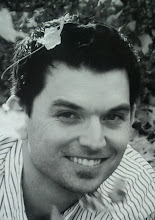We've all seen it...the overweight guy who hits a huge slice. How many overweight players do you know that hit a draw? Is it possible? Sure it is, it's just not very common. Why is that? Well, in short, players with weak core strength rely on hand speed and swing plane to compensate for dysfunction in the swing. If these compensations are not correct or enough, that player will hit at least a fade and in most cases, a slice. I contend that while swing mechanics are obviously the key to shot production, biomechanics directly influence swing mechanics. Without proper biomechanics, swing mechanics must compensate for the biomechanical inadequacies. As the driver of a car with a twisted frame must continually make corrections to maintain the course of travel, the golfer with a dysfunctional frame must make similar corrections to maintain the clubhead's course of travel. The human frame is of utmost importance in determining swing mechanics and the core musculature is of utmost importance in determining the functionality of the human frame. It is the core that stabilizes and straightens the spine. Additionally, stronger core musculature can help prevent injury during the strenuous act of the golf swing.
The muscles that make up the 'core' are usually thought to be the abs and maybe the low back erectors. Actually, the core is made up of most muscles in the trunk, so the body minus the arms and legs. This includes rectus and transversus abdominals, external and internal obliques, multifidi, quadratus lumborum groups, pelvic floor muscles, hip flexors, hip extensors (glutes), and least thought of...the diaphragm. According to other sources, there are more muscles that make up the core but this list is sufficient for our purposes. Basically, the core is a list of muscles that surround the spine and stablize the body in virtually all ranges of motion. With weak core muscles, the golfer subjects himself to increased stress on intrinsic structures such as spinal disks and facet joints. But even if no injury is realized by the golfer, weak core muscles can cause a loss of ability to rotate through the ball effectively.
When a player starts his swing, an increasing amount of resistance is created around the trunk. The stronger the core muscles, the more resistance is created (the rubberband effect). With strong muscles, the muscles do the work during the unwind phase through simple rebound, but with a weak core, the energy must be created by a lateral shift, increased foot movement (happy feet), and/or increased hand/arm movements resulting in inconsistency and an increased risk of overuse injury (golfer's elbow or aka medial epicondylitis). When these factors are considered, it is reasonable to conclude that players with weak core muscles subject themselves to a higher risk of injury and poor shot outcomes.
It is best to consult your doctor before beginning an exercise routine. See a doctor knowledgeable in functional rehab to see the best results (i.e. chiro, physiatrist or maybe even a pt).
The best exercise to begin with is a side plank. Start out laying on your side, bend your knees, and push up on your arm stabilizing yourself on your elbow. *make sure your back is straight during this exercise!
Hold for 10 seconds and do 3 sets 2 times a day. Then repeat on the other side. As you progress with your ability, try the exercise with your legs extended and try holding it for 15-20 seconds.
More exercises can be done, but this will get you started. Let me know if you have any questions.
-Nathan Williams
Tuesday, February 2, 2010
Subscribe to:
Post Comments (Atom)


No comments:
Post a Comment